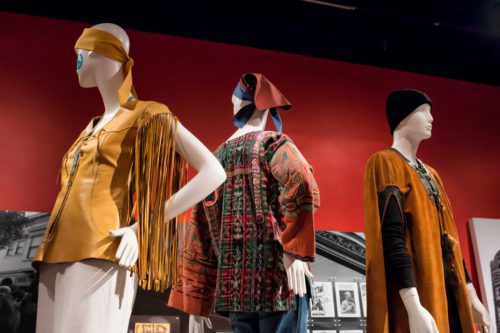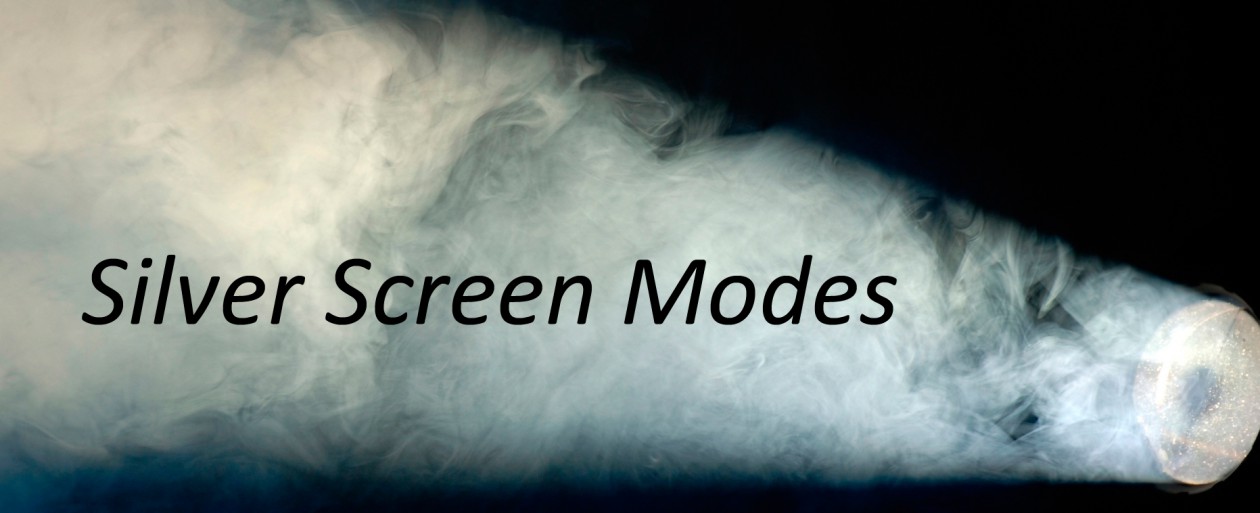
The year 1967 delivered a rainbow of innovative music, movies , art and fashion. leading to the huge “Summer of Love” gathering in San Francisco and other cities. Music fueled much of the spirit of the times (although some might say marijuana and hallucinogens did as much). But the creativity and dynamism of 1967 music is unmistakable. Many are celebrating this event as it reaches its 50th anniversary, along with the musical milestones that seemed all part of it.
A youth could always link directly to a song or a group, whether on a transistor radio or on the new underground FM station that more and more moved away from the top 40 format. It was through the latter that many were first introduced in 1967 to Jimi Hendrix, and his unique renditions of Hey Joe and The Wind Cries Mary. And then his album Are You Experienced, was released, with its wild, psychedelic cut of Purple Haze. When he played at the Monterey Pop Festival in June, at Paul McCartney’s insistence, he blew everyone away. And then the Beatles’ Sgt. Pepper’s Lonely Heart’s Club Band album came out in June. Pink Floyd’s first album The Piper at the Gates of Dawn came out in August. And then another band and singer crushed everyone at Monterey; Janis Joplin with Big Brother and the Holding Company. Their album would also come out in August. Then another British group made its second influential album: Disraeli Gears released by the Cream in November.

The youth that crowded Haight-Ashbury, or L.A., the so-called hippies, were already recognized by their dress. Or those in New York or London for that matter. They had begun inventing their own dress code. It had begun in London with the “Mods,” short for modernists, who listened to jazz and dressed cool. After the “British Invasion” of the Rolling Stones, Beatles, Kinks and others, many American kids started dressing differently as a symbol of youth and independence. The uniqueness of the dress was largely born in these urban centers since that is where the small boutiques, independent clothing stores, or in the U.S., army-navy surplus stores where off-beat garments and stylish creations could be found or created. In the mid 1960s, large manufacturers or retailers had not yet begun marketing to this segment of youth. And consequently, the young were always on the prowl for places that would cater to their clothing and stylistic interests.
Along with the British invasion of music, another breath of fresh air came into fashion with the miniskirt. Mary Quant of London is usually credited with having started the style, although Andre Courreges of France claims to have invented it. He certainly started another style of the period, the “Go-Go” boot. But another English designer is most likely the real originator of the miniskirt, and that’s John Bates. He designed under the label Jean Varon, and among other short-skirt creations of his, he designed for Diana Rigg as Emma Peel in the TV series The Avengers (1963-67). One of his designs for Diana Rigg is shown below.

The miniskirts on display below are from the historic Andre Courreges spring 1964 collection. His theme for the collection was “Space-Age,” and it featured goggles, helmets, and plastics, and the geometric patterns on the miniskirts.

The Spanish-Basque designer who worked in France, Paco Rabanne, also designed stylish miniskirts. His innovative “12 Unwearable Dresses” collection in 1966 used metal disks or plaques, fastened with links. He gave women a “suit of armor.” They made their appearance in a couple of movies in 1967. Audrey Hepburn wears one in Two for the Road, shown below.

The James Bond spoof starring David Niven as Bond, and Orson Welles as Le Chiffre, features a bevy of beautiful Bond girls (as guards) clad in Rabanne’s metallic minis, as shown below.

Another movie from 1967 was the English Smashing Time. Michael York plays the photographer Tom Wabe, and Lynn Redgrave also co-stars, as shown below.

The British Mod influence on male fashion was considerable. The first thing that came across the Atlantic was the slim look of pants and jackets in the early 1960s. Brian Jones of the Rolling Stones was always a natty dresser. He is shown below, wearing stovepipe pants and a seersucker jacket.

Photo By O’NEILL / REX FEATURES
1964
A bit later male fashions trended more colorful and even peacock. Stripes had become fashionable in the U.K. for pants and jackets, and with flared, bell-bottom pants in the U.S. When I first wore bell-bottoms in 1965 I had to find them in the army-navy surplus store – as sailor bell-bottoms – the usual stores didn’t carry flared pants yet.
Jimi Hendrix wore military with a lot more flare, picking a fur-lined Hussar’s jacket with its rows of brass buttons and gold braiding (called bullion and frogging). Hendrix always had the complete peacock look in his public appearances, and didn’t dress much differently for his private outings.

Jimi Hendrix and Brian Jones are together below.

Nehru jackets, named after the Indian Prime Minister Jawaharlal Nehru, became popular in the the U.K. and the U.S. after the Beatles wore them in 1965. Many other rock musicians sported them in the 1960s. While usually in white or a solid color, the paisley model shown below was made by Sy Amber of Hollywood in 1967 where I bought it, accessorized with cheap Indian necklaces from the Akron, and worn to nightclubs like the Whisky-a-Go-Go. Paisley itself was a fabric decoration from India, and the two fit perfectly in a 60s environment increasingly influenced by Indian meditation and the music of Ravi Shankar.

Bonnie and Clyde had its costumes designed by Theadora Van Runkle. It made a fashion splash, and brought back the popularity of the beret. The movie was released in August 1967 in the U.S., but not until early 1968 in France. By then Brigitte Bardot was already sporting her French beret in this photo arriving at London’s Heathrow airport in November 1967.

The search for non-traditional fabrics to incorporate into fashion latched onto materials and techniques such as macrame, fringe, tie-dye, beading, and metal-work.
“The Summer of Love Experience: Art, Fashion, and Rock & Roll will be an exhilarating exhibition of iconic rock posters, photographs, interactive music and light shows, costumes and textiles, ephemera, and avant-garde films. A 50th anniversary celebration of the adventurous and colorful counterculture that blossomed in the years surrounding the legendary San Francisco summer of 1967, the exhibition will present more than 300 significant cultural artifacts of the time, including almost 150 objects from the Fine Arts Museums’ extensive permanent holdings, supplemented by key, iconic loans.” The exhibition runs through August 20, 2017.
Two of their displays are shown below.


Separate events are sure to be held commemorating the 50th anniversary of Sgt Peppers Lonely Hearts Club Band and some of the other noteworthy albums, as well as perhaps the fashion collections.


Love the photo at top. Can you tell me the photographer, date and product line?
Thanks!
Sorry, I pulled this photo from the web many years ago and do not have the photographers name, date it was taken, nor any product information.
Are those André Courrèges sunglasses at the top? If not, who designed them?
Is the photo from 1967? Do you have a photo credit?
Thanks
I don’t know if they are Courrèges sunglasses or not, nor the specific year. I do not have a photo credit.
Doing some catching up on your posts today. My personal favorite of this era, with respect to television, was Diana Rigg as the Emma Peel character. Not always trur “mod” but always stylish, including lots of pants and pant suits. (kudos to John Bates or Jean Varon). Thanks for this stunning post!
Thanks Inge. It’s always fun to looks back at the Mod era – for the energy in its styles if nothing else. Though another interesting aspect was that small boutiques could launch styles with their own particular look or mix of clothing options. John Bates should be better known. He took on the name Jean Varon as his moniker for his designs.
Wonderful review of an unforgettable era, Christian. “Those were the days, my friend, we thought they’d never end,” as Mary Hopkin sang on Apple Records in 1968.
My favorite birthday gift this year has been the 50th anniversary edition of “Sgt. Pepper,” soon I’ll be seeing the deYoung exhibit, and will also take in the local annual Italian Street Painting Festival this month – this year’s theme: “Summer of Love – an Art and Music Experience.”
Great quote Lady Eve, and so apt. How fabulous that you’ll get to see the exhibition at the deYoung Museum. I probably had a lot of the clothes on the men’s portion of the exhibit. Somehow my Nehru jacket was the only piece that survived. And I still have Sgt Pepper – in pretty good condition, along with the Cream album, another favorite. Thanks for your comment.
You may want to put that Nehru jacket and your original Sgt. Pepper album on exhibit, Christian!
Great idea Lady Eve! Some day for the Nehru jacket. Actually, I have used the Sgt Pepper album cover for an exhibit – “The Art of Album Covers.” Some of the best album covers in terms of cover art were used from the 1960s through the 1980s. It was very eye catching. Most of the comments were from people who said they remembered having those albums at one time, or liked the bands. That art form is a lost art – although I hear the last remaining vinyl press and cardboard album maker can’t make them fast enough to meet the current demand.
Thank you for this post on the very interesting era in fashion. Aside from the great 99 fashions from Get Smart were the truly unique and very mod fashions of Doris Day from her show “Doris Day Show”. From movies I was surprised and impressed by the mod fashions in the film “Day the Fish Came Out”, especially Candice Bergen’s mod costumes . The movie was only watchable for the fashions in it.
Thanks for the additional info on Mod and 1960s fashions Tim.
Very enlightening article. Thanks.
Sometimes I find myself watching Get Smart, not for the laughs, but to check out 99’s wardrobe!
Thanks CaftanWoman – some of the shows and movies got it right about the fashions and the rest and some of them were pretty hoaky.
I never watched Get Smart but since you did it had to be good.